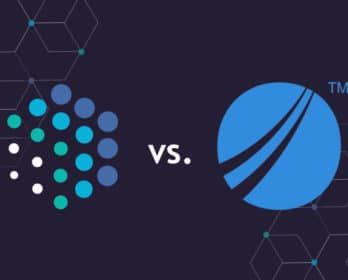It’s like watching a game show. I’ll take high ownership costs and low overall value for $1200, Alex!
How on earth did we get here again?
We had brilliance on our side. Technologists naturally systemize themselves right out of a job.
Imagine this scenario: A person gets paid one million dollars a year to be in an office for eight hours and roll five dice once an hour, and input the results into an application. Maybe, some people would be happy just sitting there. A technologist? It’s a guarantee they will immediately automate the task. It’s in their DNA.
So, if we have teams of people who have a natural tendency to create efficiency, how are we back at software rationalization?
Vendor overload: Software is eating the world. VC’s pump $100 billion into software every year. We’ve been sold to. Here comes the hard look at where your firm is getting real value. Stealth IT is a very real thing. Somehow, it always comes creeping back to the responsibility of IT teams. And, viola, application rationalization.
Crippling Work Arounds: These projects help IT appease the business. Back in the days where we used to gather around a water cooler, these projects were coupled with “You know this thing might really jump up and bite us one day.” That day was about March 16, 2020 for most people. We’ve been losing our best people to a lot of data janitorial work because of these projects. Promises for staffing up never came to fruition. So now we have some of our best IT people, our automation and efficiency experts, playing catch-up.
Bad application build justification: We met with a firm that decided to build their own CRM system. Nope, not making this up. Despite the absolute saturation of really great off the shelf CRM systems, this company came to the conclusion that it needed to build. How did they get there? This happens three ways:
- a deep distrust of vendors, as in, we’ve been burned so badly we will never do this again;
- a single person or small group who is chomping at the bit for a really big project; or
- the idea that the cost of internal build is lower than the cost of a vendor and ignoring the soft dollar costs around maintenance. (These can be very significant).
The rule of thumb is that app maintenance is regularly over 70% of IT spend. Considering the cost of maintenance is essential when evaluating a build.
Monolith fatigue: Our legacy systems do really, really important things. But sadly, they often have the architecture of a knitted castle (pull on strings at your own risk). These applications chew up people’s time like no other.
What’s different this time?
Well, like an old game show, some things are different and some are still the same (building an inventory and looking at dependencies). Here’s how this time we can make it count:
Cloud gives us more. Any cloud vendor should be able to give you instantaneous metrics on use. AWS, Azure, etc. provide constant feedback. At BroadPeak, we saved a ton of money just by going through and retiring environments we were no longer using. It really didn’t take that much time.
Vendor evaluation and management is a core competency. This can’t be stressed enough. Understanding how to get the most out of your technology vendors is probably the single greatest skillset one can have over the next 10 years. There is a whole book here, but suffice to say vendor management can make or break organizations.
New technology. It is impossible to keep up with all the new technologies rolling out. But, we have to try. The way to think about new technologies is this: they behave like a superhero at first. And in the superhero world, superpowers ALWAYS have a downside. Be on the lookout for this and critically evaluate new technologies. The right one can whittle a five-person process down to a half-person process.
Integration. OK, OK, this is very self serving as an integration vendor. But we are not the only ones advancing the ball in integration and ETL. It’s a complex area that only an IT person could love. Data integration applications like K3 are rapidly filling in the gaps, resulting in far less IT expenditure. If software is eating the world and data is the new oil, an integration and data warehouse strategy is an absolute headliner. Likewise, great integration gives you the ability to move the things that don’t work well in monoliths to somewhere more effective.
Of course, we always love talking about integration strategy. If you are interested in how to integrate data as part of your application rationalization we are always game to give you our input. Pipelines, streaming ETL, Snowflake, Redshift, adaptors…there are so many cool things that enable your best IT people to get back to systemizing themselves out of a job (which is where they are happiest).






